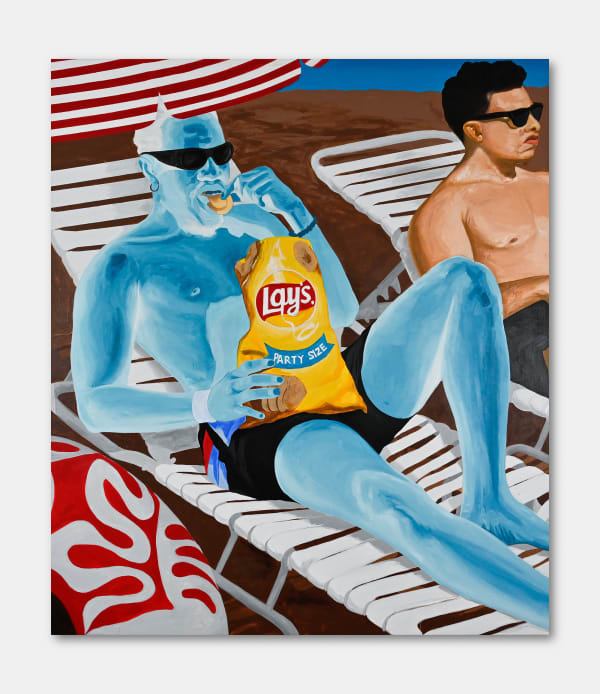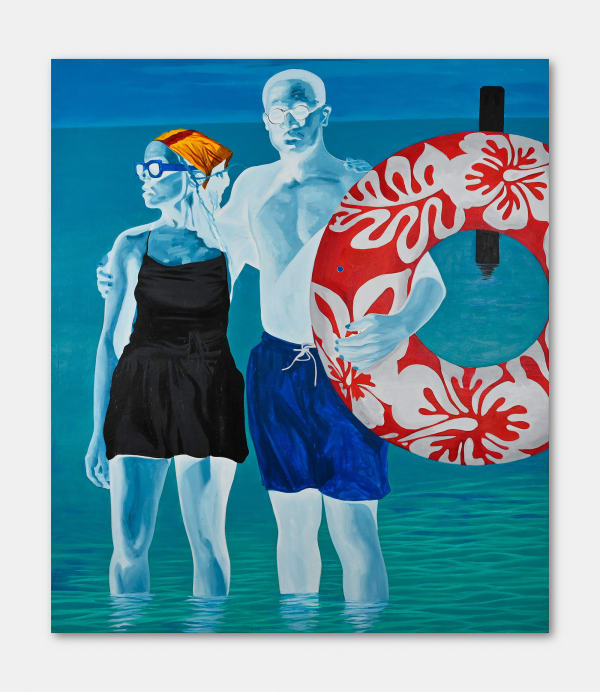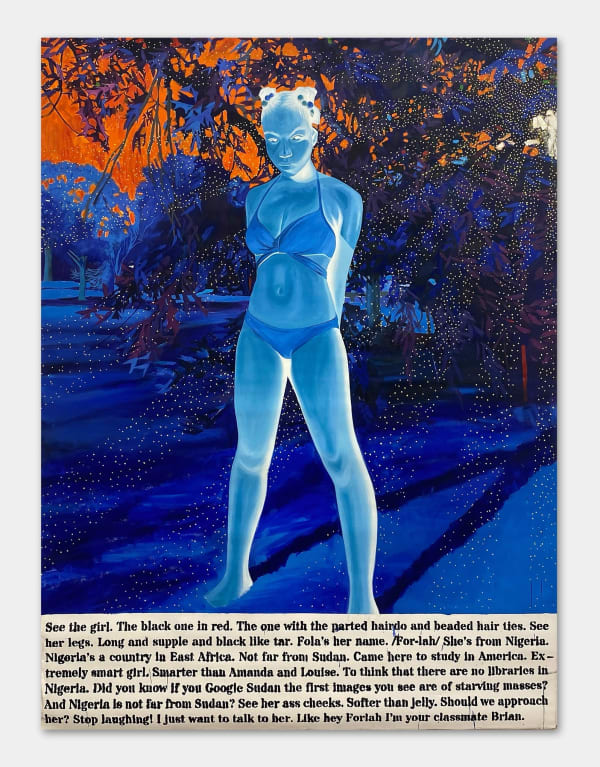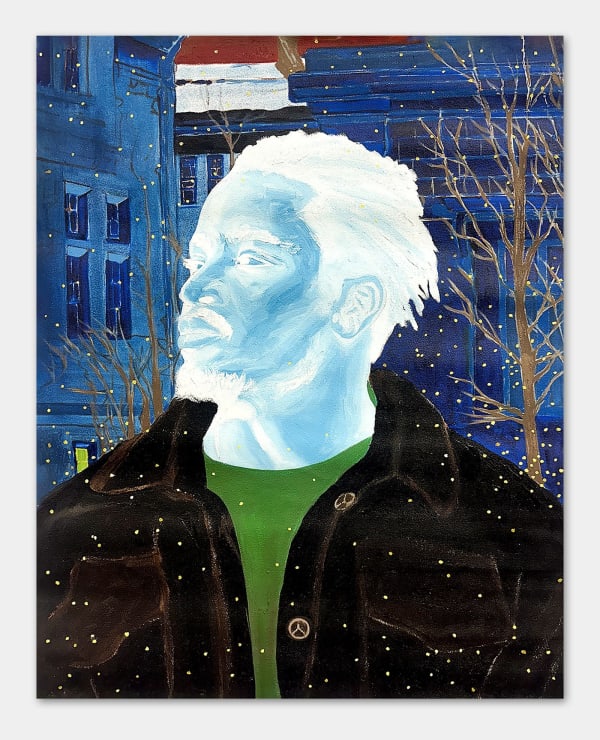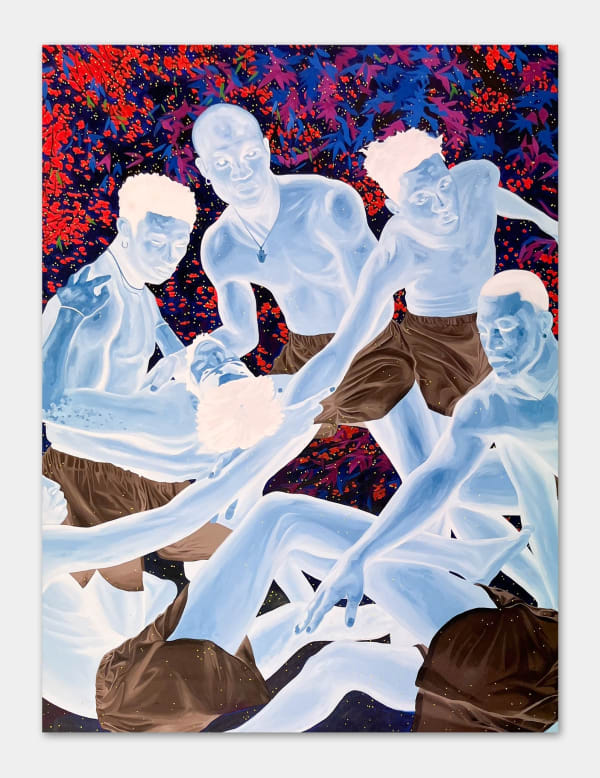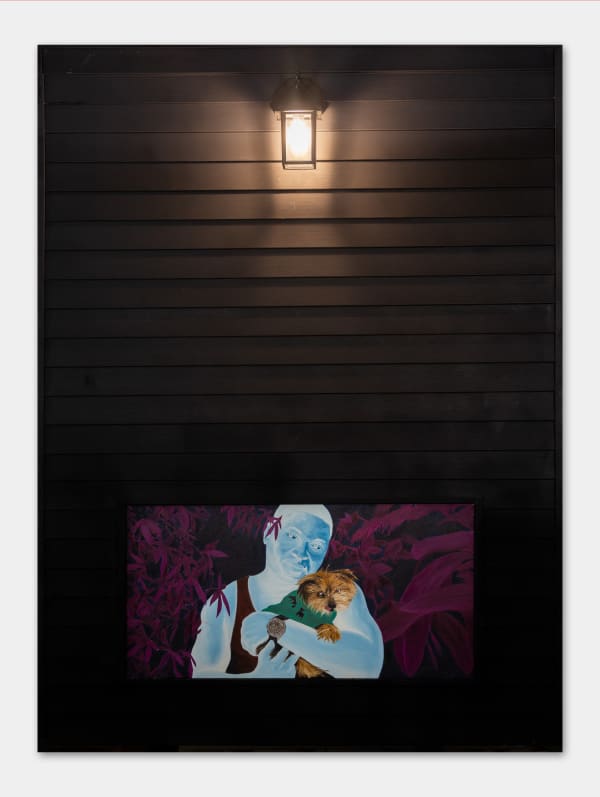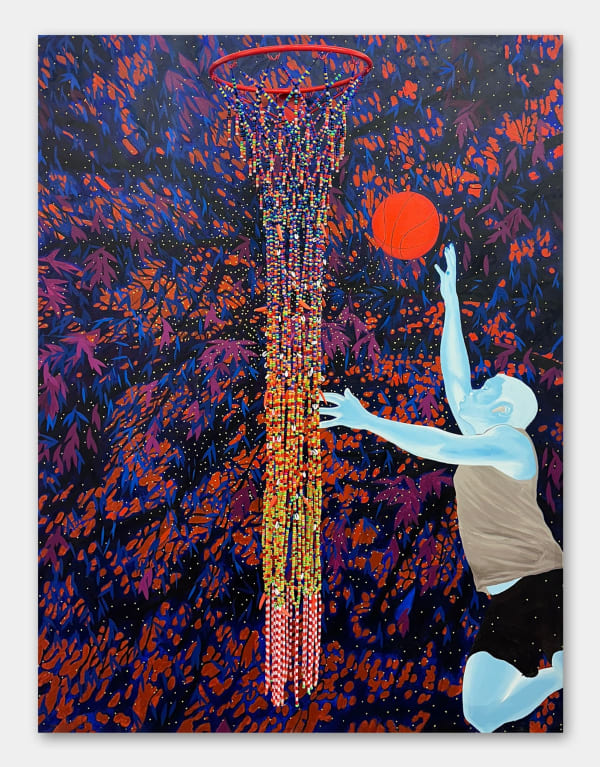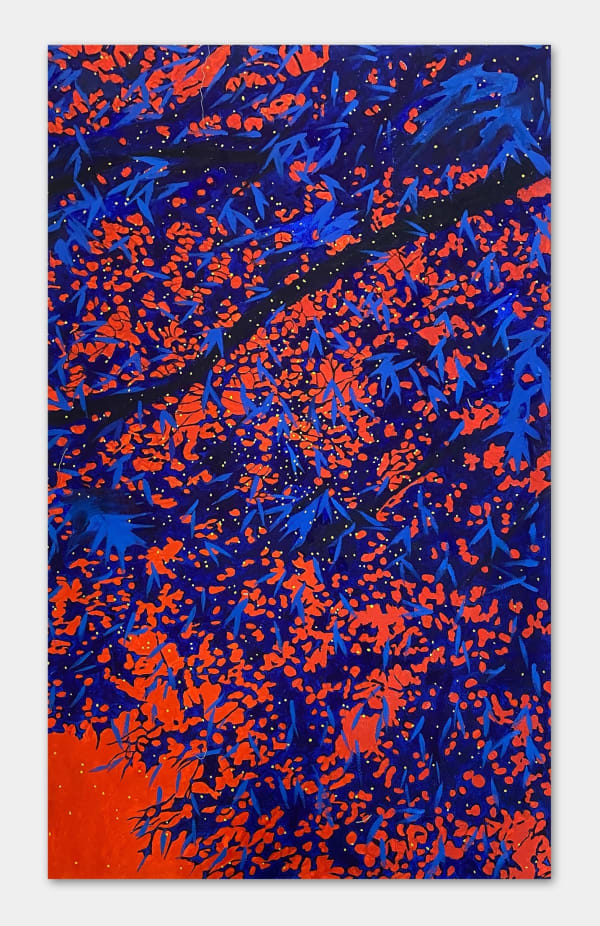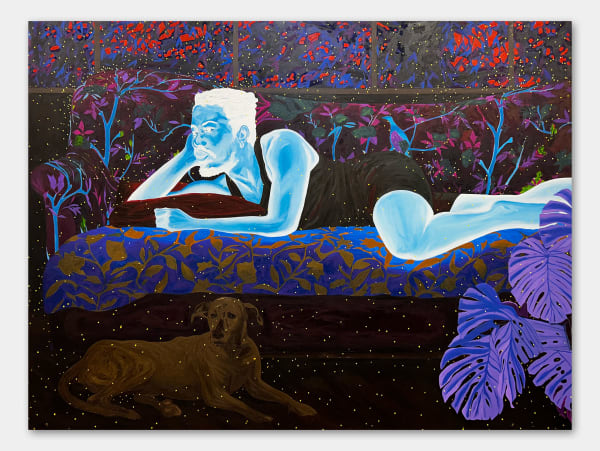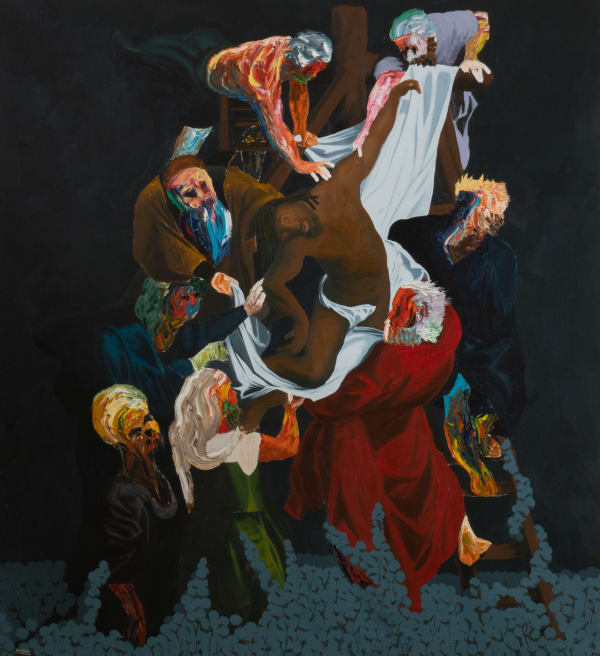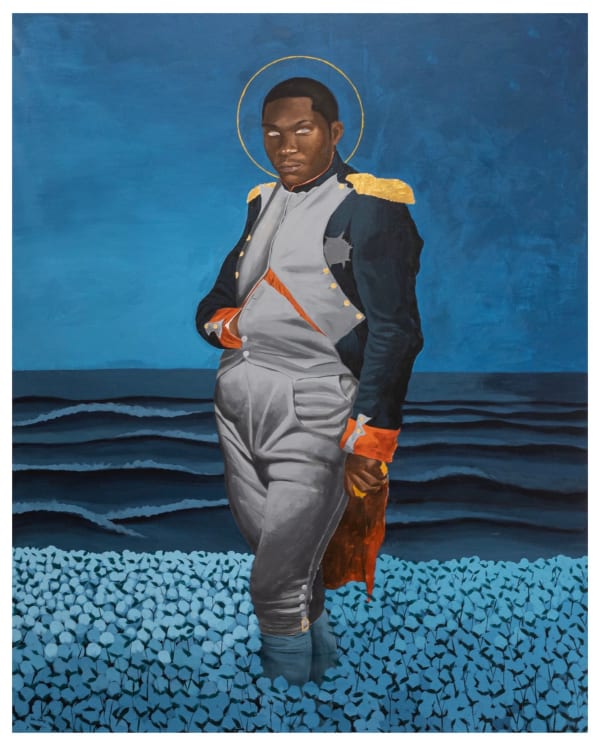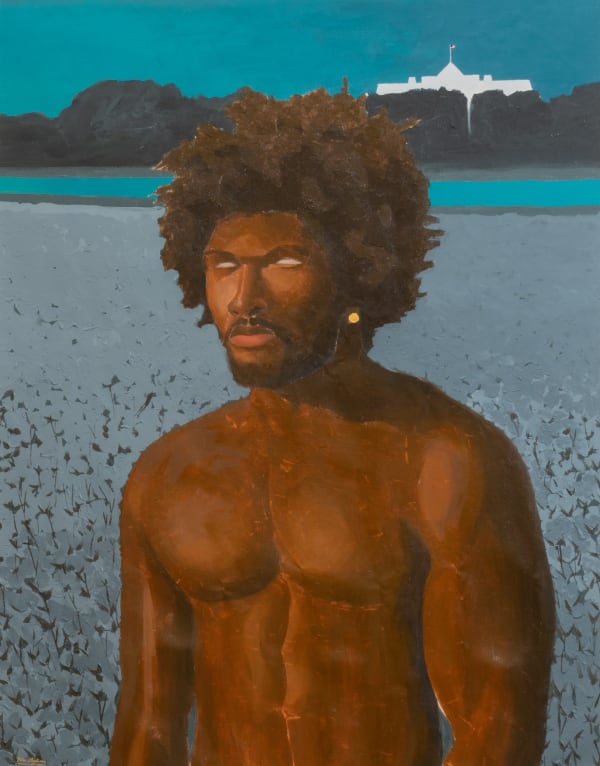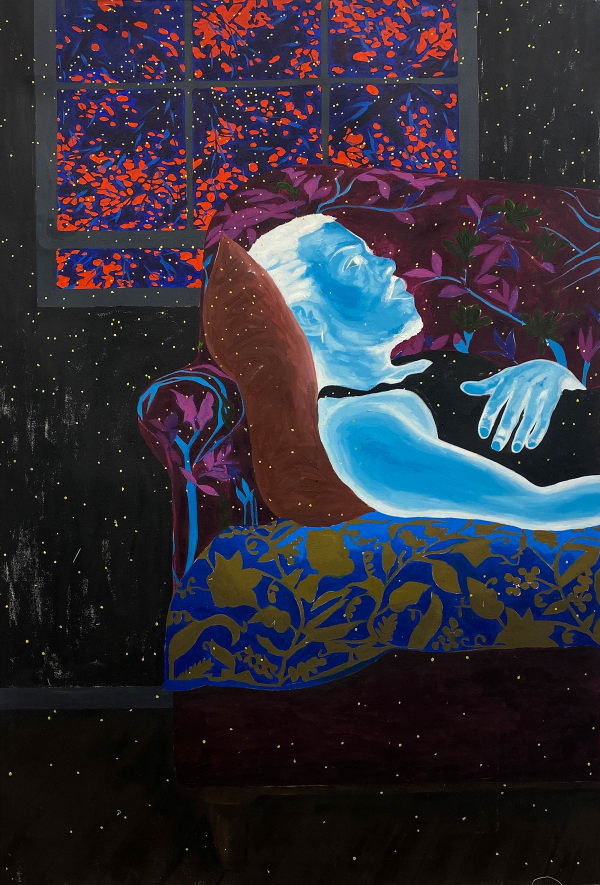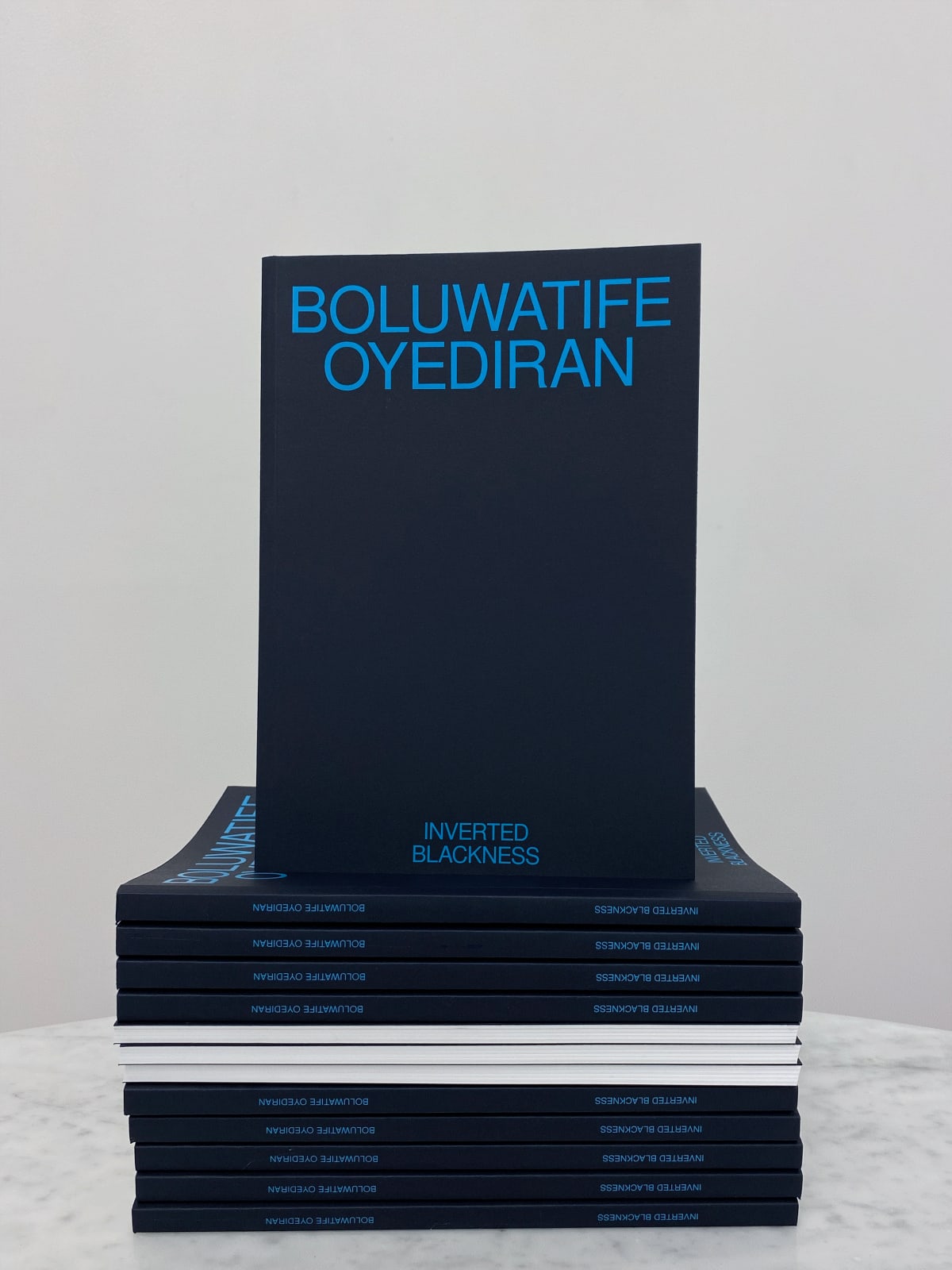Boluwatife Oyediran
BOLUWATIFE OYEDIRAN EST NÉ EN 1997 AU NIGERIA. IL VIT ET TRAVAILLE ACTUELLEMENT À RHODE ISLAND, AUX ÉTATS-UNIS.
Boluwatife Oyediran a récemment obtenu un master en beaux-arts (Master of Fine Arts - MFA) de la Rhode Island School of Design. Il vit et travaille actuellement entre le Nigeria et les États-Unis.
Peintre contemporain figuratif, sa pratique reflète son engagement profond à explorer l’identité noire qu’il réimagine et réoriente dans les canons de l'histoire, de la religion et de l'art occidental.
Les premières œuvres de Boluwatife Oyediran utilisaient le coton comme symbole central de sa réflexion. Elles incitaient à réfléchir aux oppressions systémiques historiques, notamment en questionnant les liens entre l'histoire de la mode, l'histoire du coton et la manière dont ces histoires sont liées aux Noirs.
Ses nouvelles pistes de réflexion – qui s’inscrivent dans la continuité de ses oeuvres précédentes – l’ont mené à développer le concept de “Inverted Blackness”. Dans ces portraits peints en négatif, la peau de ses modèles – des personnes ayant quitté le continent africain pour s’installer aux États-Unis – apparaît ainsi bleue, entourée d’un halo lumineux. Ces images matérialisent une identité en mutation et capturent les changements que subit le corps lorsqu’il se trouve confronté à un environnement. Cette nouvelle série fera l’objet d’une seconde exposition personnelle à la galerie AFIKARIS à l’automne 2024 sous le titre Inverted Blackness et sera accompagnée d'une publication.
Boluwatife Oyediran a exposé au Nigeria, en Suisse, en France, au Ghana, aux États-Unis et en Autriche. Il a eu notamment deux expositions personnelles en galerie : Point of Correction à la galerie AFIKARIS à Paris en janvier 2022 et For Boiz Like Me Who’ve Considered Suicide/When the Rainbow is Enuf à la galerie 1957 à Accra à l’été 2022. Son travail a également été présenté au Musée des Beaux-Arts de Krems en Autriche dans le cadre de l’exposition The New African Portraiture. Shariat Collections dont le commissariat a été assuré par Ekow Eshun.
-
 David and Avery (Party Size), 2025
David and Avery (Party Size), 2025 -
 Hell or High Water, 2023
Hell or High Water, 2023 -
 Simone & Lloyd (The Favorite One), 2025
Simone & Lloyd (The Favorite One), 2025 -
 Simone’s Yellow Scarf, 2025
Simone’s Yellow Scarf, 2025 -
 The Transfiguration, 2023-24
The Transfiguration, 2023-24 -
 Dami, 2024
Dami, 2024 -
 Hold Me Here and There, 2025
Hold Me Here and There, 2025 -
 Joanna, 2024
Joanna, 2024 -
 Plants of America, 2023-24
Plants of America, 2023-24 -
 Dami and Obasi I, 2024
Dami and Obasi I, 2024 -
 My basement window (American Architecture I), 2024
My basement window (American Architecture I), 2024 -
 Higher Goals (After Hammons), 2024
Higher Goals (After Hammons), 2024 -
 David on a couch II, 2024
David on a couch II, 2024 -
 Untitled (Landscape I), 2024
Untitled (Landscape I), 2024 -
 David on a Couch, 2023-24
David on a Couch, 2023-24 -
 One of Y'all Folks Gon Betray Me, 2021
One of Y'all Folks Gon Betray Me, 2021 -
 And their Fingertips Were White with Grief, 2021
And their Fingertips Were White with Grief, 2021 -
 The African Pope, 2021
The African Pope, 2021 -
 Untitled (portrait of Queen Elizabeth II), 2021
Untitled (portrait of Queen Elizabeth II), 2021 -
 Self Portrait As Napoleon, 2021
Self Portrait As Napoleon, 2021 -
 Lady with a Boll, 2021
Lady with a Boll, 2021 -
 Kemi, 2021
Kemi, 2021 -
 To Become a Man, 2021
To Become a Man, 2021 -
 Dreamscape, 2021
Dreamscape, 2021 -
 Moremi, 2021
Moremi, 2021
-

ARE WE GOING SOMEWHERE OR JUST GOING
3 Juillet - 9 Août 2025Dans la brume estivale, la frontière se brouille entre le voyage et l’errance. L’exposition invite à explorer cet état de suspension, cet entre-deux : entre deux échanges, entre la nuit...Lire plus -

Inverted Blackness
Boluwatife Oyediran 17 Octobre - 23 Novembre 2024Boluwatife Oyediran second solo exhibition at AFIKARIS Gallery presents his latest series called Inverted Blackness. The apparent blue bodies bathed in a luminescent halo are in reality the image of black bodies switched to their negative. This transformation, digitally operated and then reproduced onto the canvas, constitutes what Oyediran calls Inverted Blackness - the concept at the heart of his eponymous exhibition.Lire plus -

Classique!
Group show 16 Juillet - 17 Septembre 2022Nous sommes ravis d'annoncer l'ouverture de notre nouvel espace parisien situé au 7 rue Notre-Dame-de-Nazareth, 75003 Paris. L'exposition inaugurale Classique !, - avec des œuvres de - Moustapha Baidi Oumarou, Matthew Eguavoen, Salifou Lindou, Omar Mahfoudi, Richard Mensah, Ousmane Niang, Jean-David Nkot, Nana Yaw Oduro, Hyacinthe Ouattara, Daniel Pengrapher et Marc Posso - elle se déroulera du 16 juillet au 17 septembre.Lire plus
-

Point of Correction
Boluwatife Oyediran 22 Janvier - 22 Février 2022Personnalités historiques et scènes emblématiques de la peinture religieuse viennent enrichir le vocabulaire pictural de Boluwatife Oyediran. C’est ainsi que le peintre nigérian écrit, à travers son exposition personnelle Point...Lire plus
-
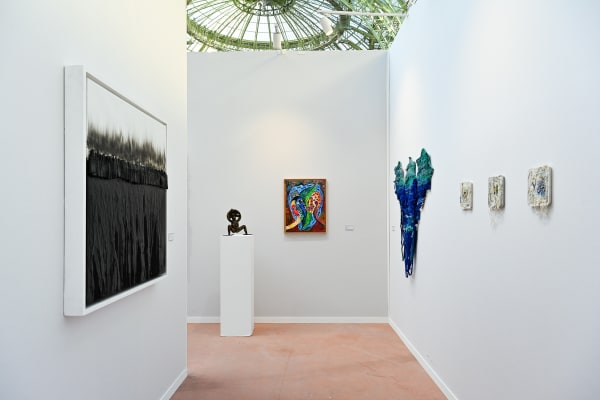
Art Paris
Paris | France 3 - 6 Avril 2025EXHIBITING ARTISTS: Boluwatife Oyediran Fariba Boroufar Mouhcine Rahaoui Hervé Yamguen Ozioma OnuzulikeLire plus -
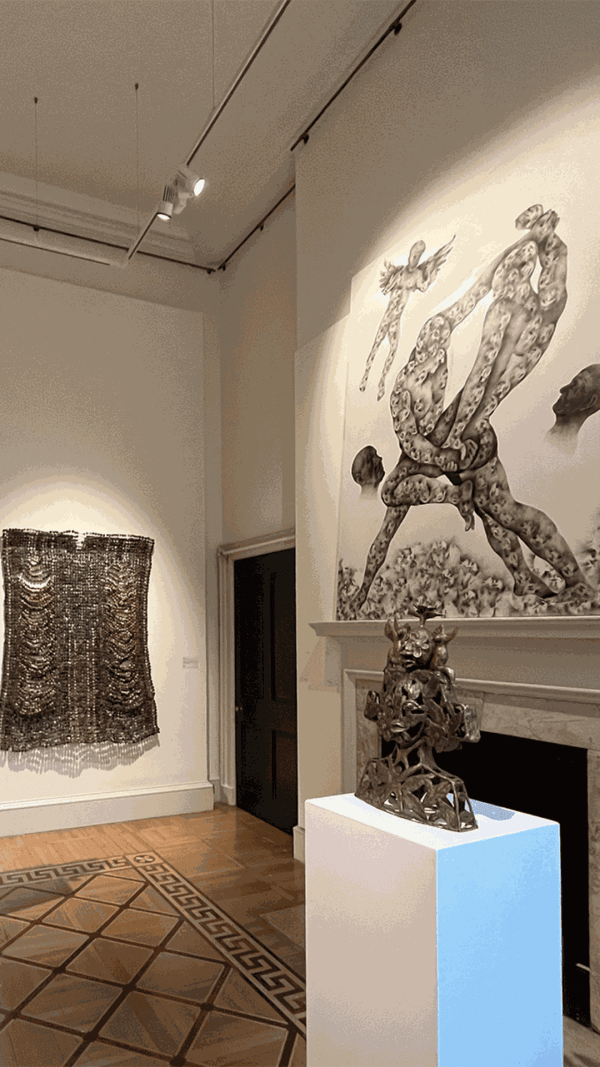
1-54 London
London | UK 10 - 13 Octobre 2024From October 10th to 13th 2024, AFIKARIS is pleased to return to 1-54 London with a presentation fo works by Ozioma Onuzulike, Boluwatife Oyediran, Mouhcine Rahaoui, Géraldine Tobé and Hervé Yamguen.Lire plus -

1-54 New York
New York | États-Unis 19 - 22 Mai 2022ARTISTES EXPOSÉS : Salifou Lindou Moustapha Baidi Oumarou Cristiano Mangovo Jean David Nkot Crystal Yayra Anthony Boluwatife OyediranLire plus
On the occasion of his solo show Inverted Blackness, on view at our gallery until 23 November 2024, artist Boluwatife Oyediran shared with us the story behind his project and his creative vision in a a special interview.
HOW DID YOUR ARTISTIC JOURNEY BEGIN, AND WHEN DID YOU REALIZE YOU WANTED TO BECOME AN ARTIST?
I think I’ve been an artist for most of my life, since when I was a child. Everybody has that story of them making stick drawings while they were very young, before they got better at drawing, and then moved on to something else. But, professionally, I became an artist during the COVID-19 pandemic. It was then I could say that I discovered what it is that artists do. And since then, I’ve been on a journey to finding my style and voice as a visual artist.
HOW WOULD YOU DESCRIBE YOUR ARTISTIC STYLE AND HOW HAS YOUR CREATIVE PROCESS EVOLVED?
Currently, I make figurative paintings, mostly. But I write short stories on the side; I dabble in fiction. During my MFA program at RISD [Rhode Island School of Design] I tried to incorporate some of my short fictions into my paintings, which led to works like The Transfiguration (2023-24) which is part of my latest exhibition Inverted Blackness.
My creative process has evolved over these last few years partly because I’m still discovering myself as an artist. I think I have the potential to do more than I’m doing, and the more I discover myself, the more I evolve. For instance, in my next series I have plans to make some landscape paintings, in connection to my experience as an African immigrant living in America. So, I’ve been studying a lot of Monet and Van Gogh. I don’t believe there’s one medium to say something, so at times I’m looking for another medium to say what I’m saying in my paintings or writings. As Lynette Yiadom-Boakye famously said: “I write the things I cannot paint and paint the things I cannot write.”

